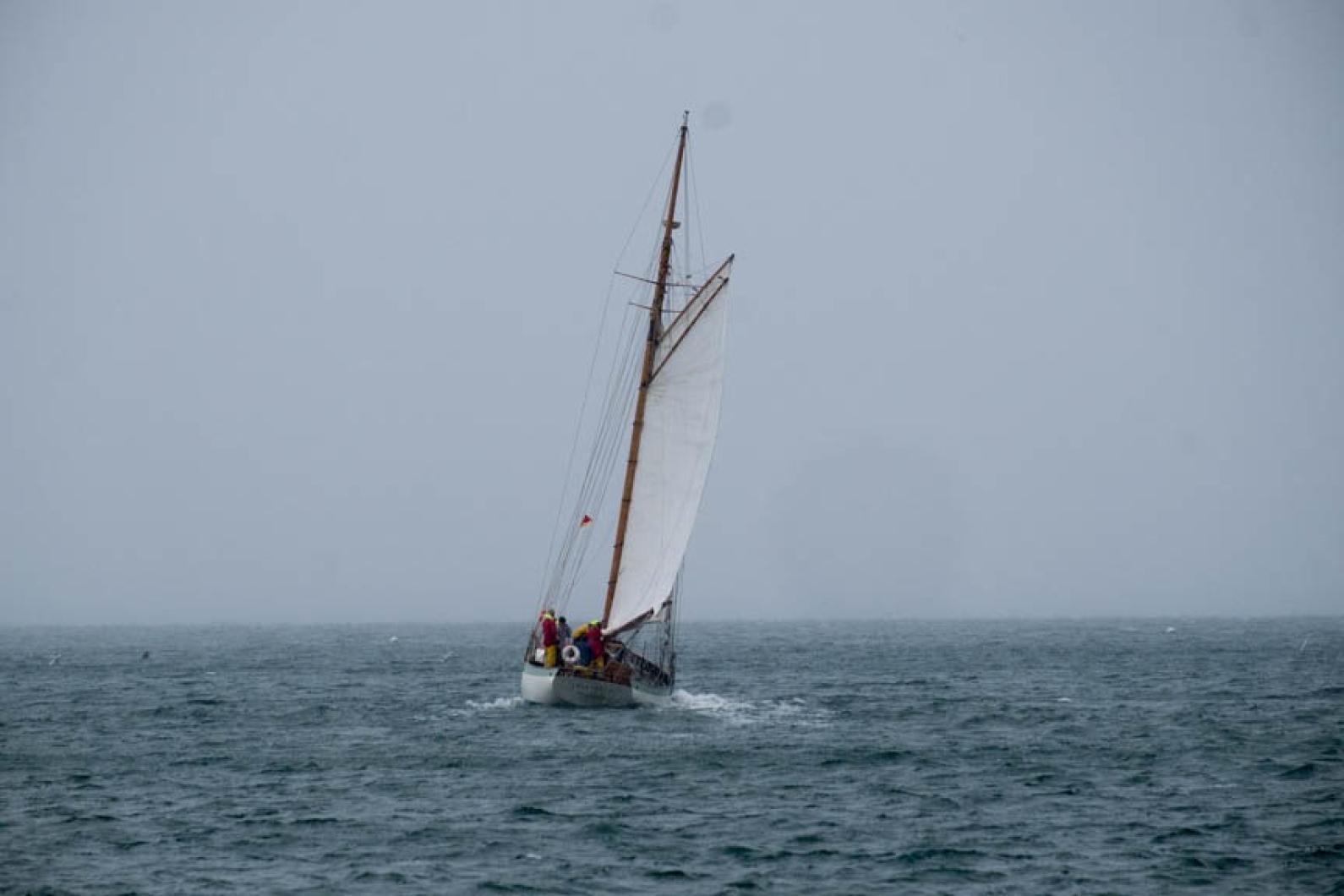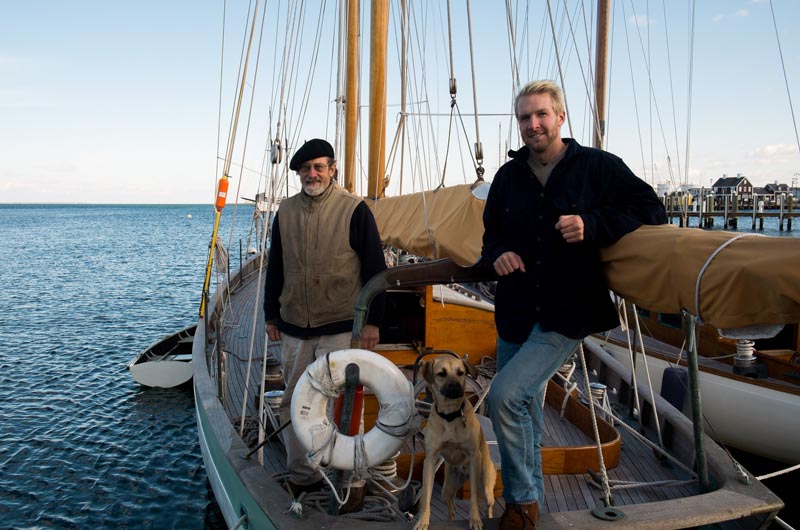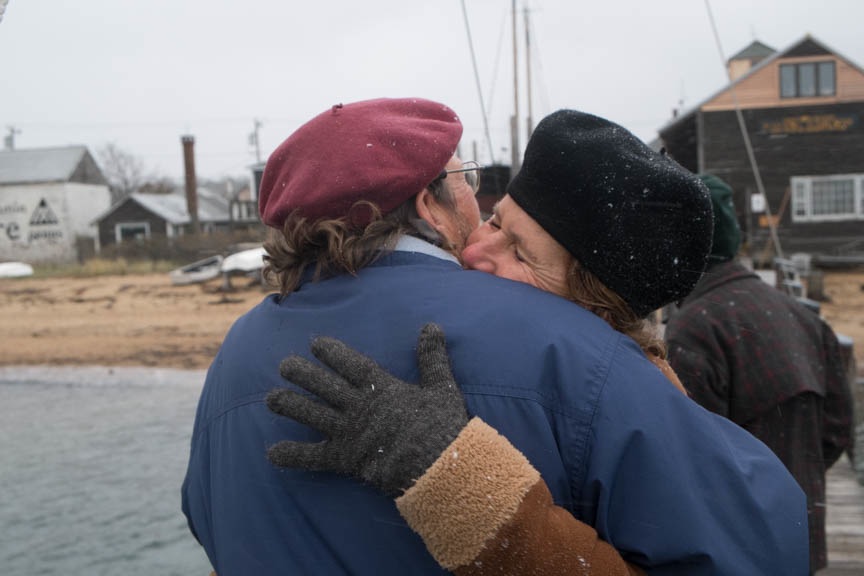When the days turn short and the air turns cold, sailors’ thoughts turn to winter cruising in warmer climes. On the day after Thanksgiving, Nat Benjamin and a four-man crew of Islanders cast off the stern lines of the gaff-rigged schooner Charlotte and set sail for the Caribbean. But this will be more than a cruising adventure; it will be an adventure in cultural exchange. The Charlotte’s port-of-call is Ile-a-Vache (Cow Island), a small island off the south coast of Haiti.
Known as Isla Vaca for two centuries after the Spanish first claimed it as part of Hispaniola, Ile-a-Vache served as the headquarters of the notorious 17th-century pirate captain Henry Morgan. Today, the quiet 20-square-mile island is home to about 15,000 people. Its largest village is Kai Kok (also known as Port Morgan).
Mr. Benjamin’s interest in Ile-a-Vache was piqued by reading a cruising guide for Haiti written by Frank Virgintino, a seasoned Caribbean cruising hand. In an area boasting some of the most beautiful tropical scenery in the whole Caribbean, the spot Virgintino loves best is Ile-a-Vache.
Nat and Pam Benjamin know their way well around the Caribbean islands, and they always aim to get off the beaten path of well-known anchorages replete with amenities for yachters and tourists. Their great pleasure is in forming friendships with people who live very differently from us in the United States, finding ways to share what they have with their new friends and drawing inspiration from them and their culture.
They decided to make Ile-a-Vache the Charlotte’s Caribbean base for the winter, and to make connections with the community there. The Charlotte would become a means to transport to Ile-a-Vache many things needed by the local people — in particular, the fishermen and the children in an orphanage on the island.
The fishermen of Ile-a-Vache are totally reliant on their small motorless sailing sloops, said Brad Abbott, a member of the Charlotte crew, “yet they have very little means to maintain them. You will see sails made of tarps, of sewn-together rice bags, even shirts. There are no large trees, so there are no long planks, only short planks. With all these additional seams, caulking is a challenge. Basically they bail while fishing. They have no hardware, few tools. Their resources are so limited, they have to be resourceful. They waste nothing.”
Mr. Benjamin added: “Haitians can take anything — a piece of metal, wood, plastic — and fashion out of it something useful or something artistic. Their spirit is unique in the Caribbean because there is that certain ‘doucement’ that you don’t find in the other islands.”
Mr. Benjamin scoured the boat yard for extra tools — braces, saws, chisels, a hand drill, a hatchet. He went through all the drawers in search of extra hardware and fittings. Best of all: old sails that had been collecting in the shop for 20 years and are still good for a second act, recut and pieced and bent to the spars of a Haitian fishing “bateau a voile.”
Meanwhile, Mrs. Benjamin sent out an email blast requesting donations of clothes, supplies and money for the orphanage. Since 1967, Sister Flora’s Orphanage (of the Order of St. Francis of Assisi) has been the life work of Sister Flora Blanchette. Many Haitian orphans have no place to go; here no child is turned away. There currently are 78 children in the orphanage, of whom 28 have serious physical challenges. Jean Samuel Altema, a local fisherman who is an ad hoc spokesman and communication line for the island community, hiked the four miles from Kai Kok to the orphanage to confer with Sister Flora, who requested specifically 100 cloth diapers and dried milk — the orphanage goes through five pounds of it per week. As the founder and director of the Sense of Wonder arts camp, Mrs. Benjamin was eager to explore the possibility of doing some art workshops and projects with the children. Mr. Altema brought back the answer: “Oui! That would be wonderful.”
The Charlotte has more space inside than is immediately apparent. Mr. Benjamin describes her as “burdensome” — with a substantial beam of 14 feet to a length of 50 feet. By Sunday, the pert little schooner with the sea-green bulwark was pretty well packed to the gills. The sail collection was stowed in the roomy quarter berths in the aft of the vessel. Tools and hardware had claimed space in the bilge. The forward cabin is the orphanage area. A leeboard had to be installed to keep the berth’s bulging contents from rolling out: rectangular canvas cases of donated clean clothes that had been carefully folded and vacuum-packed by Angela Park, Gannon and Benjamin’s office manager; a carton of 100 cloth diapers; five-pound bags of soy flour and powdered organic milk; tote bags of shoes and sports gear; a carton of brand-new, colorful flip flops. And art materials: finger paints, crayons, brushes, half gallons of acrylic paints, reams of craft paper, rollers and sponges for printmaking. Fishing gear donated by the Martha’s Vineyard Striped Bass and Bluefish Derby and a carton of new T-shirts donated by Sail Martha’s Vineyard had found a nook or a cranny on the vessel.
In an email (translated from French), Mr. Altema wrote: “I must tell you that having people like Nat and Pam come here on their boats and help us is perfectly great for us, because we live on a small, poor island where people are always in need of one type of assistance or another.”
Soon the Charlotte and her crew will be heading out past East Chop, then southeast to Cape Pogue, south to Muskeget Channel. “Once through Muskeget Channel you are out of sight of land,” said Mr. Benjamin. “When you are going out into the North Atlantic, it’s always an adventure.”
Donations for Sister Flora’s Orphanage can be sent to Pam Benjamin, P.O. Box 1558, Vineyard Haven, MA 02568. Please make checks payable to Sense of Wonder Creations/Haiti Fund. Sense of Wonder Creations is a 501c(3) and donations are tax deductible. All money goes directly to the orphanage.









Comments (5)
Comments
Comment policy »